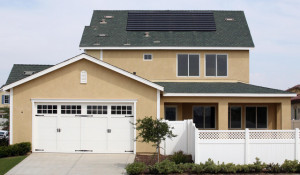 The phrase of the day is “Feed in Tariff”.
The phrase of the day is “Feed in Tariff”.
No, it is not a tax on over-eating at McDonalds.
It is a way of encouraging the use of renewable energy. Germany is most famous for this method, but it is not the only one. Read here about how our Corporation Commission might consider the issue.
Why is this important to you? Well, if you’ve ever asked “why don’t we have more solar in Arizona?”, then this is one major reason why.
There are two types of methods generally used.
1) Rebates –this is what we have now. Basically, if you install the panels, you get a rebate from the utility company (as required by the Corporation Commission).
Example: The gross cost for solar panels that I want to put on my roof is $15,000. The utility will give me a rebate of $8,000. Then I can also take various tax credits, etc. The ultimate cost will be around $7,000.
Why this is good: Its better than nothing, which is what we had.
Problems: You need to be able to come up with the initial cost (although leasing companies have made this a little better). Also, just because you install it does not mean that you will use it. Further, as the utilities are the ones who give out the rebates, they can slow the process of installation.
2) Feed in Tariff –The utility (and other rate payers) pay you for the electricity that you produce and put in to the system with renewable energy technology.
Example: My electric bill is $100 per month. But I know that every month I could generate $150 per month worth of electricity, based on current rates and what I know the utility will pay for the electricity I generate. I pocket $50 per month and get free electricity.
Why this is good: It gives investors certainty that they will get money back from their investment. It drives the installation of manufacturing for that renewable resource, but also energy efficiency (the less energy you use, the more money you pocket at the end of the month!).
Problem: Some argue that those rate-payers who don’t have solar have to absorb the cost difference of installing solar versus the cheaper coal/gas options. The important thing to keep in mind, however, is that (a) costs for solar are decreasing and (b) it will cost more if we wait and try to do it later.
So, look at this map. Who do you think would benefit if we do this the right way?
‘Nuf said….











Leave a Comment